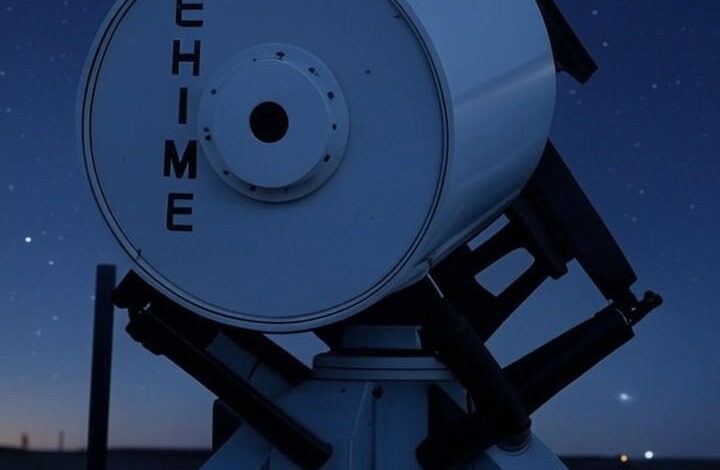CHIME Telescope Detects Brightest Ever Fast Radio Burst

The Canadian Hydrogen Intensity Mapping Experiment (CHIME) telescope has detected the brightest fast radio burst (FRB) ever observed, a significant milestone in astrophysical research. Named FRB 20250316A or RBFLOAT for “Radio Brightest Flash of All Time,” this remarkable event originated from NGC 4141, a galaxy located approximately 130 million light-years away in the Ursa Major constellation. This discovery not only challenges existing theories about the origins of FRBs but also opens new avenues for understanding these enigmatic cosmic phenomena.
Unprecedented Insights from CHIME
Since its inception in 2018, CHIME has transformed the landscape of FRB detection. Its innovative design, which includes four cylindrical reflectors, allows it to scan vast areas of the sky daily. In its first year, CHIME identified over 500 FRBs, distinguishing between one-time events and repeaters. This capability has provided astronomers with crucial data, indicating a variety of mechanisms behind these bursts.
The recent detection of RBFLOAT marks a significant advancement in this research. Unlike most FRBs, which are typically traced back to distant galaxies, RBFLOAT’s proximity enables detailed examination. Researchers utilized CHIME’s enhanced outrigger stations to localize the burst with remarkable precision, pinpointing it within 13 parsecs. This level of accuracy is particularly notable for a non-repeating event.
Implications for Astrophysical Theories
The findings surrounding RBFLOAT pose serious questions for long-held astrophysical theories. Traditionally, magnetars—highly magnetized neutron stars—have been regarded as primary candidates for FRB sources. This assumption gained traction following a 2020 event linked to a magnetar within our own Milky Way. However, RBFLOAT’s location, nestled within an older stellar population rather than the young star-forming regions typically associated with magnetars, suggests alternative origins. According to a researcher quoted in Berkeley News, this burst may instead arise from phenomena such as colliding neutron stars or unusual white dwarf interactions.
Moreover, the nature of RBFLOAT as a single occurrence diverges from the repeating FRBs, which have been attributed to separate processes in various theories. The excitement surrounding this discovery has generated discussions on social media platforms, including posts from astronomers and space agencies like the Canadian Space Agency, emphasizing CHIME’s pivotal role in tracing the burst back to its host galaxy.
CHIME’s success has been bolstered by international collaboration, involving prestigious institutions such as the University of Toronto, McGill University, and MIT. Recent enhancements, including the addition of outriggers in California and West Virginia, have improved the telescope’s ability to triangulate data, enabling more accurate mapping of FRBs.
Looking ahead, the integration of data from observatories such as the James Webb Space Telescope could enhance our understanding by providing optical counterparts to these radio signals. As noted in a researcher’s post, the discovery of RBFLOAT challenges existing magnetar theories and calls for a reassessment of the mechanisms behind cosmic radio emissions.
Broader Astrophysical Significance
The ongoing investigation into FRBs extends beyond their origins; these bursts serve as valuable probes for understanding the universe. Their dispersion through intergalactic plasma can illuminate the distribution of baryons, elements that are difficult to detect in cosmic evolution models. RBFLOAT, due to its proximity, offers a clearer signal with minimal distortion caused by intervening matter. Scientists describe the burst as “as energetic as the sun, but lasting only milliseconds,” highlighting its unique characteristics.
Despite these advancements, many questions remain. The extraordinary brightness of RBFLOAT raises inquiries about whether this is a singular event or indicative of a new subclass of FRBs. Continued observations by CHIME, coupled with global collaborative efforts, may soon provide answers, potentially reshaping our understanding of extreme astrophysics.
As the field progresses, the detection of over a thousand FRBs, as updated on platforms like Wikipedia, reveals emerging patterns. Some bursts originate from “dead” galaxies, while others exhibit repetitive behavior. The case of RBFLOAT underscores the necessity for diverse theoretical models to account for these observations. In summary, this latest discovery serves as a beacon for astronomers, guiding them toward deeper insights into the mysteries of the universe.






